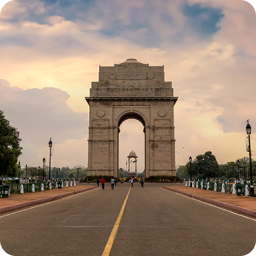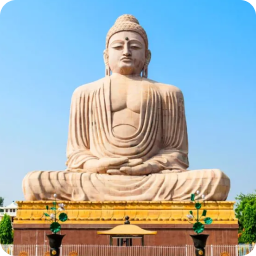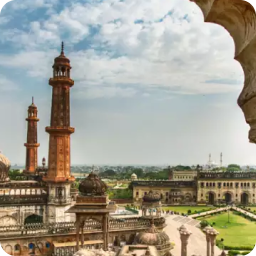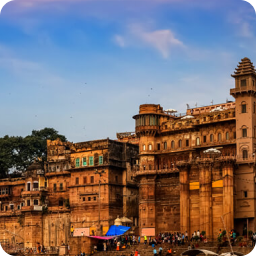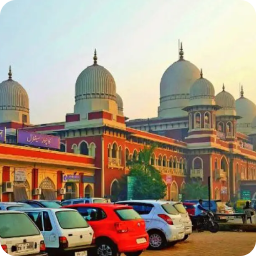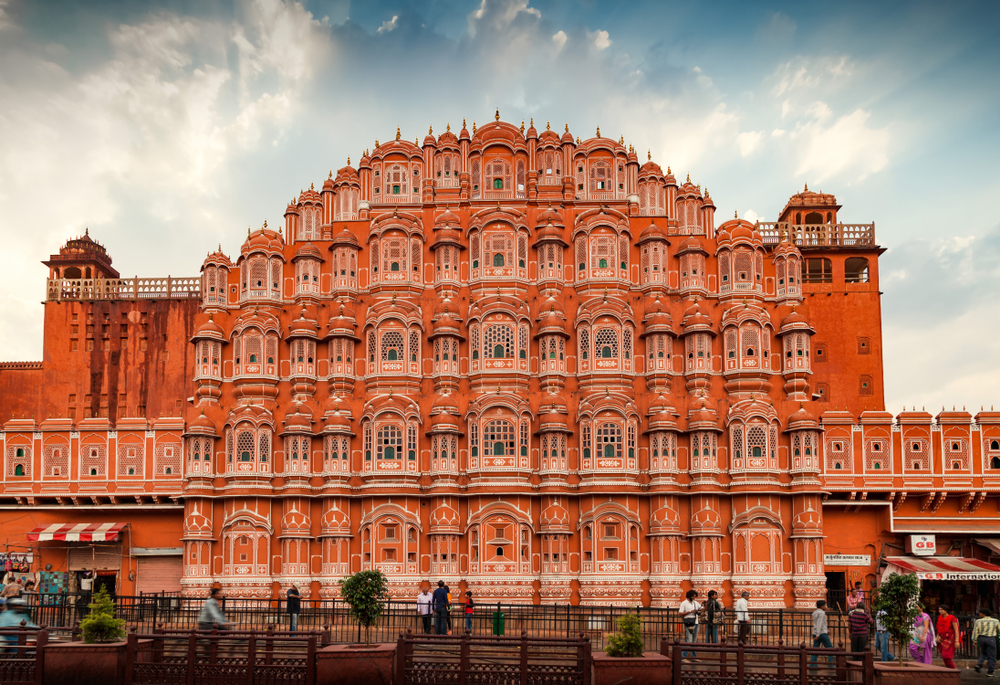Union and Territory: A Detailed UPSC Study on Articles 1-4 of the Indian Constitution |
Union and Its Territory in the Indian Constitution
The Indian constitution serves as the highest legal authority in India. It’s like a rulebook that outlines who holds authority in the country, what they can and cannot do. It also lays out the rights and responsibilities of citizens. Interestingly, it’s the world’s largest constitution, initially starting with 395 articles in 22 sections and 8 schedules, but now expanded to 448 articles across 25 sections and 12 schedules. We’ll delve into the first part of the constitution, titled “The Union and its Territory,” which spans from articles 1 to 4. Let’s explore this aspect in more detail.
Union of States in the Indian Constitution
- The first part of the Indian Constitution, encompassing Articles 1 to 4, addresses the concept of the “Union” and its territorial boundaries”.
- It’s interesting to note that India is often referred to as the “Union of States,” even though the Indian Constitution has a federal structure.
- This distinction was explained by Dr. B. R. Ambedkar, who preferred the term “Union of States” over “Federation of States” for two important reasons:
-
- Unlike the American Federation, where states came together through an agreement, the Indian Federation was not formed through such a compact.
- In the Indian context, states do not have the right to secede or break away from the union, further differentiating it from a typical federation.
- This unique aspect of the Indian Constitution sets it apart from other federal systems and is an important historical and constitutional distinction.
Analyzing Articles 1-4: Union and Its Territory in the Indian Constitution
- Part 1 of the Indian Constitution, Articles 1 to 4, talks directly about the Indian Union and its Territories. You can see this in the table provided.
- The concept of “Union and its Territory” is a fundamental aspect of the Indian Constitution, as it defines the geographical boundaries and political structure of the Indian Republic.
- Let’s delve into the key points related to the Union and its Territory in the context of the Indian Constitution:
|
Union and Its Territory Articles |
|
| Article 1 | Name and territory of the Union. |
| Article 2 | Admission or establishment of new States. |
| Article 2A | Sikkim to be associated with Union (Repealed) |
| Article 3 | Formation of new States and alteration of areas, boundaries or names of existing States. |
| Article 4 | Laws made under articles 2 and 3 to provide for the amendment of the First and the Fourth Schedules and supplemental, incidental and consequential matters. |
India’s Constitution: Article 1 – Union, Territories, Governance
- Article 1 of the Indian Constitution defines two important aspects: the country’s name and its political structure.
- It states that India, also known as Bharat, is a union of states. This means that India is made up of different states and territories that work together as one entity.
- In more detail, Article 1(2) specifies that all the states and territories must be listed in the First Schedule of the constitution.
- Article 1(3) explains what the territory of India includes: the territories of the States, the Union territories listed in the First Schedule, and any territories that the Indian government might acquire in the future.
- Even though India’s constitution is federal in structure, it is referred to as a ‘Union’ because no state within it has the right to separate from the Indian union.
- This division of India into states and union territories was done to ensure effective governance and to accommodate our diverse population.
- It’s important to note that the term ‘territory of India’ is broader than ‘Union of India.’
- Union of India: This includes all the states in India, which collectively form the Union of India.
- Territory of India: This encompasses not only the states but also the union territories and any territories that the Government of India may acquire in the future.
- The details of how these units are governed will be discussed in later chapters.
- It’s worth noting that the acquisition of foreign territory is not covered by Article 1; instead, it is governed by international laws.
Article 2 and State Formation: Dynamics of Parliamentary Authority in the Indian Constitution
- Article 2 of the Indian Constitution gives the Parliament the authority to include new states in India or create entirely new states within the country.
- The specific terms and conditions for doing so are determined by the Parliament. This article grants two important powers to the Parliament:
- The power to accept new states into the existing Indian Union. This means allowing states that are already part of India to join.
- The power to create new states that didn’t previously exist.
- Example: Prior to 1975, Sikkim was an independent monarchy. However, following a plebiscite, the people of Sikkim chose to join India.
- Article 2A: It was introduced into the Constitution by the Thirty-Fifth Amendment Act of 1974 to facilitate this change.
- It’s important to note that Article 2A has since been repealed by the Thirty-Sixth Amendment Act of 1975.
Article 3: Constitutional Powers of Parliament in Shaping India’s Territorial Landscape
- Article 3 of the Indian Constitution grants significant powers to Parliament.
- Creating New States: Parliament can form new states from existing ones.
- Example: Telangana was created from Andhra Pradesh, Uttarakhand from Uttar Pradesh, and Punjab by merging Patiala and East Punjab States Union (Pepsu).
- Changing State Areas: Parliament can increase or decrease the land area of any state.
- Altering State Boundaries: It has the authority to change the borders of states.
- Changing State Names: Parliament can also rename states.
- Uniting Parts of States or Union Territories: The power to create a new state or union territory includes merging a part of one state or union territory with another for this purpose.
- However, there are two crucial conditions before Parliament can proceed:
- President’s Recommendation: The President must recommend this action before Parliament can consider it.
- State Legislature Input: Before recommending the bill, the President must consult the concerned state’s legislature to gather its views.
- It’s important to note that these views are non-binding, meaning Parliament can choose to disregard them.
- Furthermore, if changes are made to the bill, it doesn’t need to be sent back to the state for reevaluation.
Fundamental Difference Between the Provisions of Article 2 and Article 3 |
There’s an essential distinction between Article 2 and Article 3 in the Indian Constitution, even though both involve the creation of states:
|
- For Union Territories with a legislature, like Delhi and Pondicherry, there’s no need to consult their legislature when making such changes.
- It underscores that while states can change, the unity and integrity of India remain paramount.
- Example: the formation of Ladakh as a Union Territory from Jammu and Kashmir aimed to improve governance and cater to the needs of Ladakh’s people, highlighting the importance of India’s unity and integrity over state boundaries.
Indian State Formation through Legislative Acts and Provisions |
|
| State/Act | Acts and Provisions |
| Assam |
|
| Andhra |
|
| Himachal Pradesh |
|
| West Bengal |
|
| States Reorganisation Act, 1956 |
|
| Gujarat |
|
| Nagaland |
|
| Haryana |
|
| Himachal Pradesh |
|
| Manipur, Tripura and Meghalaya |
|
| Mizoram |
|
| Arunachal Pradesh |
|
| Goa |
|
| Chhattisgarh |
|
| Uttaranchal |
|
| Jharkhand |
|
| Telangana |
|
Article 4: Article 2 and Article 3 Amendments and their Constitutional Implications
- Article 2 and Article 3 of the law allow changes to be made to the 1st and 4th Schedules, along with related matters. There are two key points to remember:
- Any law involving Article 2 or Article 3 must include provisions to modify the 1st and 4th Schedules as needed.
- Such a law, created under these articles, won’t be seen as an amendment under Article 368.
- This version is written in plain English and should be easier to understand while still conveying the same information.
|
UPSC Notes Related Links |
|
| Indian Polity Notes | Preamble of Indian Constitution |
| Fundamental Rights | Fundamental Duties |






